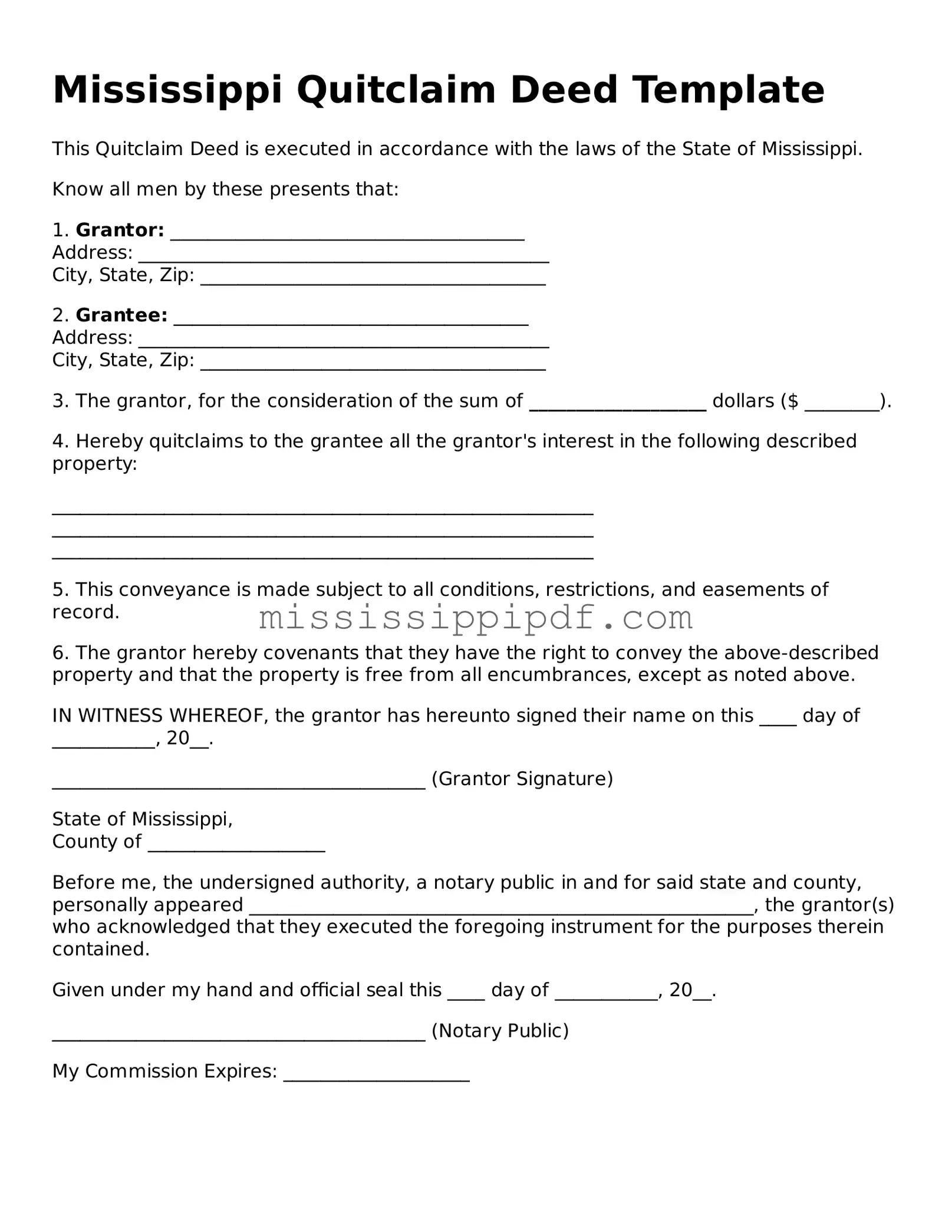A warranty deed is often compared to a quitclaim deed because both are used to transfer property ownership. However, a warranty deed provides a guarantee that the seller holds clear title to the property and has the right to sell it. This means the buyer is protected against any future claims on the property. In contrast, a quitclaim deed offers no such assurances, making it a less secure option for buyers. Essentially, while both documents facilitate the transfer of property, a warranty deed comes with a promise of ownership integrity, whereas a quitclaim deed does not.
A grant deed is another document that shares similarities with a quitclaim deed. Like a quitclaim deed, a grant deed transfers ownership of property from one party to another. However, a grant deed includes certain warranties, such as the assurance that the property has not been sold to anyone else and that it is free from undisclosed encumbrances. This added layer of protection makes grant deeds more favorable for buyers compared to quitclaim deeds, which lack these guarantees.
A special warranty deed is also akin to a quitclaim deed but with some key differences. This type of deed only guarantees that the seller has not caused any issues with the title during their ownership. It protects the buyer from claims that arose while the seller owned the property but does not cover any problems that existed before that time. Thus, while it offers some assurances, a special warranty deed still does not provide the comprehensive protection found in a warranty deed.
A bargain and sale deed is similar to a quitclaim deed in that it transfers property without providing any warranties regarding the title. However, this type of deed typically implies that the seller has some interest in the property and has the right to transfer it. While a quitclaim deed can be used even when the seller has no ownership interest, a bargain and sale deed suggests a more formal transfer of rights, even if it does not guarantee a clear title.
The California Articles of Incorporation form is a legal document required to establish a corporation in the state of California. This form outlines essential information about the corporation, including its name, purpose, and structure. To get started on forming your corporation, fill out the Articles of Incorporation by clicking the button below. For more guidance, consider visiting California Templates.
A deed of trust, while not a direct equivalent to a quitclaim deed, serves a related purpose in property transactions. This document is used to secure a loan with real estate as collateral. In a deed of trust, the borrower conveys the property to a trustee, who holds the title until the loan is repaid. Although it does not transfer ownership outright like a quitclaim deed, it involves a legal instrument that relates to property rights and interests.
A leasehold deed can also be compared to a quitclaim deed in terms of transferring rights, but it does so in a different context. A leasehold deed conveys the right to use and occupy a property for a specified period. While a quitclaim deed transfers ownership, a leasehold deed grants temporary rights to the property. This distinction is important for understanding the nature of property rights being conveyed.
Finally, a life estate deed is another document that can be likened to a quitclaim deed. A life estate deed transfers property to a person for the duration of their life, after which the property passes to another designated individual. While a quitclaim deed transfers full ownership without restrictions, a life estate deed creates a more complex arrangement that limits the rights of the original owner. Both documents involve the transfer of property, but they serve different purposes and establish different rights for the parties involved.
